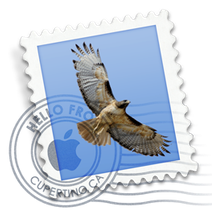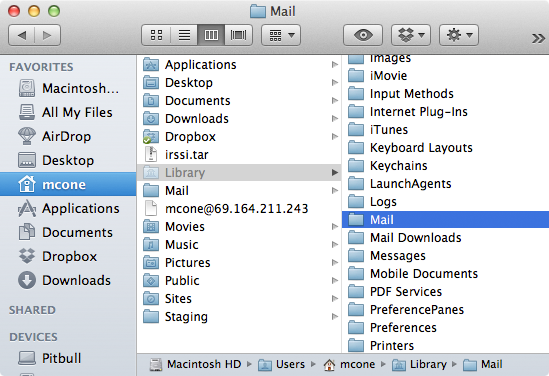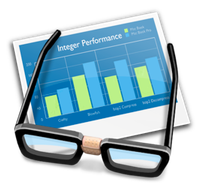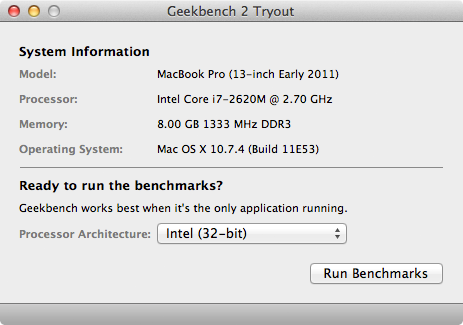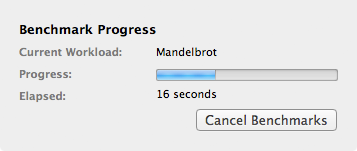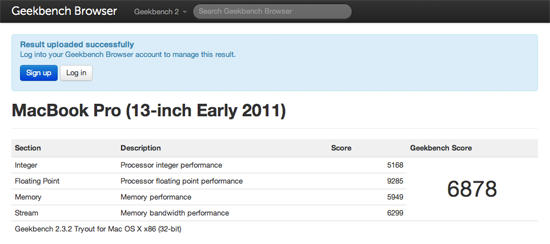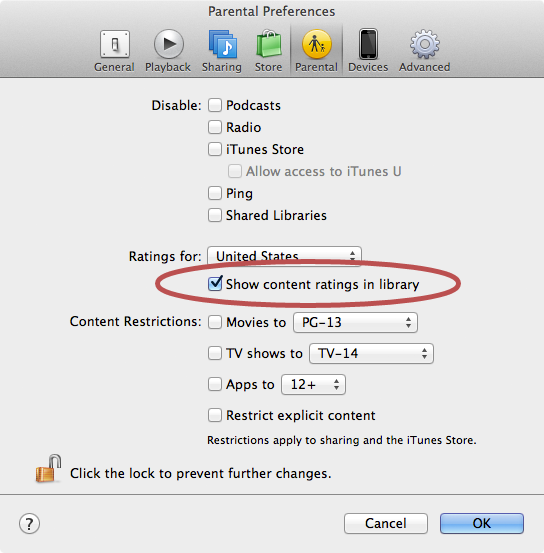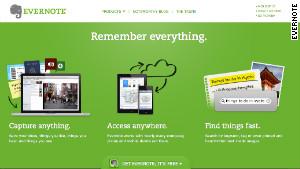
Entrepreneur Bill Gates, born on October 28, 1955, in Seattle,
Washington, began to show an interest in computer programming at the age
of 13. Through technological innovation, keen business strategy, and
aggressive competitive tactics, he and his partner Paul Allen built the world's largest software business, Microsoft. In the process, Bill Gates became one of the richest men in the world.
Born William Henry Gates III, on October 28, 1955, in
Seattle, Washington. Gates began to show an interest in computer
programming at the age of 13 at the Lakeside School. He pursued his
passion through college. Striking out on his own with his friend and
business partner Paul Allen,
Gates found himself at the right place at the right time. Through
technological innovation, keen business strategy, and aggressive
competitive tactics he built the world's largest software business,
Microsoft. In the process he became one of the richest men in the world.
Bill
Gates grew up in an upper middle-class family with two sisters:
Kristianne, who is older, and Libby, who is younger. Their father,
William H. Gates, Sr., was a promising, if somewhat shy, law student
when he met his future wife, Mary Maxwell. She was an athletic, outgoing
student at the University of Washington, actively involved in student
affairs and leadership. The Gates family atmosphere was warm and close,
and all three children were encouraged to be competitive and strive for
excellence. Bill showed early signs of competitiveness when he
coordinated family athletic games at their summer house on Puget Sound.
He also relished in playing board games (Risk was his favorite) and
excelled in Monopoly.
Bill had a very close relationship with his
mother, Mary, who after a brief career as a teacher devoted her time to
helping raise the children and working on civic affairs and with
charities. She also served on several corporate boards, among them First
Interstate Bank in Seattle (founded by her grandfather), the United
Way, and International Business Machines (IBM). She would often take
Bill along on her volunteer work in schools and community organizations.
Bill
was a voracious reader as a child, spending many hours pouring over
reference books such as the encyclopedia. Around the age of 11 or 12,
Bill's parents began to have concerns about his behavior. He was doing
well in school, but he seemed bored and withdrawn at times. His parents
worried he might become a loner. Though they were strong believers in
public education, when Bill turned 13 they enrolled him in Seattle's
Lakeside School, an exclusive preparatory school. He blossomed in nearly
all his subjects, excelling in math and science, but also doing very
well in drama and English.
While at Lakeside School, a Seattle
computer company offered to provide computer time for the students. The
Mother's Club used proceeds from the school's rummage sale to purchase a
teletype terminal for students to use. Bill Gates became entranced with what a computer could do and spent much of his free time
working on the terminal. He wrote a tic-tac-toe program in BASIC
computer language that allowed users to play against the computer.
It was at Lakeside School where Bill met Paul Allen, who was two
years his senior. The two became fast friends, bonding on their common
enthusiasm over computers,
even though they were very different. Allen was more reserved and
shy. Bill was feisty and at times combative. They both spent much of
their free time together working on programs. Occasionally, they
disagreed and would clash over who was right or who should run the
computer lab. On one occasion, their argument escalated to the point
where Allen banned Gates from the computer lab. On another occasion,
Gates and Allen had their school computer privileges revoked for taking
advantage of software glitches to obtain free computer time from the
company that provided the computers. After their probation, they were
allowed back in the computer lab when they offered to debug the program.
During this time, Gates developed a payroll program for the computer
company the boys hacked into, and a scheduling program for the school.
In 1970, at the age of 15, Bill Gates went into business with his
pal, Paul Allen. They developed "Traf-o-Data," a computer program that
monitored traffic patterns in Seattle, and netted $20,000 for their
efforts. Gates and Allen wanted to start their own company, but Gates'
parents wanted him to finish school and go on to college where they
hoped he would work to become a lawyer.
Bill Gates graduated from Lakeside in 1973. He scored 1590 out of
1600 on the college SAT test, a feat of intellectual achievement that
for several years he boasted about when introducing himself to new
people.
Gates enrolled at Harvard University in the fall, originally
thinking of a career in law. But his freshman year saw him spend more of
his time in the computer lab than in class. Gates did not really have a
study regimen. Instead, he could get by on a few hours of sleep, cram
for a test, and pass with a reasonable grade.
Gates remained in contact with Paul Allen
who, after attending Washington State University for two years, dropped
out and moved to Boston, Massachusetts, to work for Honeywell. In the
summer of 1974, Gates joined Allen at Honeywell. During this time, Allen
showed Gates an edition of Popular Electronics magazine featuring an
article on the Altair 8800 mini-computer kit. Both boys were fascinated
with the possibilities this computer could make toward personal
computing. The Altair was made by a small company in Albuquerque, New
Mexico, called Micro Instrumentation and Telemetry Systems (MITS). Gates
and Allen contacted the company proclaiming they were working on a
BASIC software program that would run the Altair computer. In reality,
they didn't have an Altair to work with or the code to run it. But they
wanted to know if MITS was interested in someone developing such software. MITS was, and its
president Ed Roberts asked the boys for a demonstration. Gates and Allen
scrambled, and spent the next two months writing the software at
Harvard's computer lab. Allen traveled to Albuquerque for a test run at
MITS, never having tried it out on an Altair computer. It worked
perfectly. Allen was hired at MITS and Gates soon left Harvard to work
with him, much to his parents' dismay. In 1975,
Gates and Allen formed a partnership they called Micro-Soft, a blend of "micro-computer" and "software."
Microsoft
(Gates and Allen dropped the hyphen in less than a year) started off on
shaky footing. Though their BASIC software program for the Altair
computer netted the company a fee and royalties, it wasn't meeting their
overhead. Microsoft's BASIC software was popular with computer
hobbyists who obtained pre-market copies and were reproducing and
distributing them for free. According to Gates' later account, only
about 10 percent of the people using BASIC in the Altair computer had
actually paid for it. At this time, much of the personal computer
enthusiasts were people not in it for the money. They felt the ease of
reproduction and distribution allowed them to share software with
friends and fellow computer enthusiasts. Bill Gates thought differently.
He saw the free distribution of software as stealing, especially when
it involved software that was created to be sold.
In February
of 1976, Gates wrote an open letter to computer hobbyists saying that
continued distribution and use of software without paying for it would
"prevent good software from being written." In essence, pirating
software would discourage developers from investing time and money into
creating quality software. The letter was unpopular with computer
enthusiasts, but Gates stuck to his beliefs and would use the threat of
innovation as a defense when faced with charges of unfair business
practices.
Gates had a more acrimonious relationship with MITS
president Ed Roberts, often resulting in shouting matches. The combative
Gates clashed with Roberts on software development and the direction of
the business. Roberts considered Gates spoiled and obnoxious. In 1977,
Roberts sold MITS to another computer company, and went back to Georgia
to enter medical school and become a country doctor. Gates and Allen
were on their own. The pair had to sue the new owner of MITS to retain
the software rights they had developed for Altair.
Microsoft
wrote software in different formats for other computer companies and, at
the end of 1978, Gates moved the company's operations to Bellevue
Washington, just east of Seattle. Bill Gates was glad to be home again
in the Pacific Northwest, and threw himself into his work. All 25
employees of the young company had broad responsibilities for all
aspects of the operation, product development, business development, and
marketing. With his acumen for software development and a keen business sense, Gates placed himself as the head of Microsoft, which grossed $2.5 million in 1978. Gates was only 23.
Gates' acumen for not only software development but also
business operations put him in the position of leading the company and
working as its spokesperson. He personally reviewed every line of code
the company shipped, often rewriting code when he saw it necessary. As
the computer industry began to grow with companies like Apple, Intel,
and IBM developing hardware and components, Bill was continuously out on
the road touting the merits of Microsoft software applications. He
often took his mother with him. Mary was highly respected and well
connected with her membership on several corporate boards including IBM.
It was through Mary that Bill Gates met the CEO of IBM.
In
November 1980, IBM was looking for software that would operate their
upcoming personal computer (PC) and approached Microsoft. Legend has it
that at the first meeting with Bill Gates someone at IBM mistook him for
an office assistant and asked him to serve coffee. Gates did look very
young, but he quickly impressed IBM, convincing them that he and his
company could meet their needs. The only problem was that Microsoft had
not developed the basic operating system that would run IBM's new
computers. Not to be stopped, Gates bought an operating system that was
developed to run on computers similar to IBM's PC. He made a deal with
the software's developer, making Microsoft the exclusive licensing agent
and later full owner of the software but not telling them of the IBM
deal. The company later sued Microsoft and Gates for withholding
important information. Microsoft settled out of court for an undisclosed
amount, but neither Gates nor Microsoft admitted to any wrong doing.
Gates
had to adapt the newly purchased software to work for the IBM PC. He
delivered it for a $50,000 fee, the same price he had paid for the
software in its original form. IBM wanted to buy the source code, which
would have given them the information to the operating system. Gates
refused, instead proposing that IBM pay a licensing fee for copies of
the software sold with their computers. Doing this allowed Microsoft to
license the software they called MS-DOS to any other PC manufacturer,
should other computer companies clone the IBM PC, which they soon did.
Microsoft also released software called Softcard, which allowed
Microsoft BASIC to operate on Apple II machines.
Between 1978 and
1981, Microsoft's growth exploded, and staff increased from 25 to 128.
Revenue also shot up from $4 million to $16 million. In mid-1981 Gates
and Allen incorporated Microsoft, and Gates was appointed president and
chairman of the board. Allen was named executive vice-president.
By
1983, Microsoft was going global with offices in Great Britain and
Japan, and with 30 percent of the world's computers running on its
software. But 1983 also brought news that rocked Microsoft to its very
foundation. Paul Allen was diagnosed with Hodgkin's disease. Though his cancer went into remission a
year later with intensive treatment, Allen resigned from company that
same year. Rumors abound as to why Allen left Microsoft. Some say Bill
Gates pushed him out, but many say it was a life-changing experience for
Allen and he saw there were other opportunities that he could invest
his time in.
Though their rivalry is legend, Microsoft and Apple shared
many of their early innovations. In 1981 Apple invited Microsoft to help
develop software for Macintosh computers. Some developers were involved
in both Microsoft develeopment, and the development of Microsoft
applications for Macintosh. The collaboration could be seen in some
shared names between the Microsoft and Macintosh systems.
It was through this knowledge sharing that Microsoft was to develop
Windows. A system was that used a mouse to drive a graphic interface,
displaying text and images on the screen. This differed greatly from the
text and keyboard driven MS-DOS system where all text formatting showed
on the screen as code and not what actually would be printed. Bill
Gates quickly recognized the threat this kind of software might pose for
MS-DOS and Microsoft overall. For the unsophisticated user—which was
most of the buying public—the graphic imagery of the VisiCorp software
would be so much easier to use. Gates announced in an advertising
campaign that a new Microsoft operating system was about to be developed
that would use a graphic interface. It was to be called "Windows," and
would be compatible with all PC software products developed on the
MS-DOS system. The announcement was a bluff, in that Microsoft had no
such program under development. But as a marketing tactic it was sheer
genius as nearly 30 percent of the computer market was using the MS-DOS
system and would wait for Windows software rather than change to a new
system. Without people willing to change formats, software developers
were unwilling to write programs for the VisiCorp system and it lost
momentum by early 1985.
In November 1985, Bill Gates and
Microsoft launched Windows; nearly two years after his announcement.
Visually the Windows system looked very similar to the Macintosh system
Apple Computer Corporation had introduced nearly two years earlier.
Apple had earlier given Microsoft full access to their technology while
it was working on making Microsoft products compatible for Apple
computers. Gates had advised Apple to license their software but they
ignored the advice, being more interested in selling computers. Once
again, Gates took full advantage of the situation and created a software
format that was strikingly similar to the Macintosh. Apple threatened
to sue and Microsoft retaliated, saying it would delay shipment of its
Microsoft compatible software for Macintosh users. In the end, Microsoft
prevailed in the courts because it could prove that while there were
similarities in how the two software systems operated, each individual function was distinctly different.In 1986, Bill Gates took Microsoft public with an initial public
offering (IPO) of $21 per share. Gates held 45 percent of the company's
24.7 million shares and became an instant millionaire at age 31. Gates'
stake at that time was $234 million of Microsoft's $520 million. Over
time, the company's stock increased in value and split numerous times.
In 1987, Bill Gates became a billionaire when the stock raised to $90.75
a share. Since then,
Gates has been on the top or near the top of Forbes' 400 list of the
world's wealthiest people. In 1999, with stock prices at an all time
high and the stock splitting eight-fold since its IPO, Gates' wealth
briefly topped $101 billion.
Yet, Bill Gates never felt totally
secure about the status of his company. Always having to look over his
shoulder to see where the competition was, he developed a white hot
drive and competitive spirit. Gates expected everyone in the company to
have the same drive and dedication. One story goes that one of Gates'
assistants had come to work early to find someone sleeping under a desk.
She considered calling security or the police when she discovered it
was Gates.
Bill Gates' intelligence allowed him to be able to
see all sides of the software industry—product development and corporate
strategy. When analyzing any corporate move, he would develop a profile
of all the possible cases and run through them, asking questions about
anything that could possibly happen. His confrontational management
style became legend as he would challenge employees and their ideas to
keep the creative process going. An unprepared presenter would hear,
"That's the stupidest thing I've ever heard!" from Gates. But this was
as much a test of the rigor of the employee as it was Gates' passion for
his company. He was constantly testing the people around him to see if
they were really convinced of their ideas.
Outside the company,
Bill Gates was gaining a reputation as a ruthless competitor. Several
tech companies led by IBM began to develop their own operating system
called OS/2 to replace MS-DOS. Rather than give into the pressure, Gates
pushed ahead with the Windows software, improving its operation and
expanding its uses. In 1989, Microsoft introduced Microsoft Office which
bundled office productivity applications such as Microsoft Word and
Excel into one system that was compatible with all Microsoft products.
The applications were not as easily compatible with OS/2. Microsoft's
new version of Windows sold 100,000 copies in just two weeks and OS/2
soon faded away. This left Microsoft with a virtual monopoly on
operating systems for PCs. Soon the Federal Trade Commission began to
investigate Microsoft for unfair marketing practices.
Microsoft
faced a string of Federal Trade Commission and Justice Department
investigations throughout the 1990s. Some related allegations that
Microsoft made unfair deals with computer manufactures who installed the
Windows operating system on their computers. Other charges involved Microsoft forcing
computer manufactures to sell Microsoft's Internet Explorer as a
condition for selling the Windows operating system with their computers.
At one point, Microsoft faced a possible break up of its two
divisions—operating systems and software development. Microsoft defended
itself, harking back to Bill Gates' earlier battles with software
piracy, and proclaiming that such restrictions were a threat to
innovation. Eventually,
Microsoft was able to find a settlement with the federal government
to avoid a breakup. Through it all, Gates found some inventive ways to
deflect the pressure with light-hearted commercials and public
appearances at computer trade shows posing as Star Trek's Mr. Spock.
Gates continued to run the company and weather the federal
investigations through the 1990s.
In 1989, a 28-year-old Microsoft executive named Melinda
French caught the eye of Bill Gates, then 37. The very bright and
organized Melinda was a perfect match for Gates. In time, their
relationship grew as they discovered an intimate and intellectual
connection. On January 1, 1994, Melinda and Bill were married in Hawaii.
But only a few months later heartbreak struck Bill Gates as his mother
was diagnosed with breast cancer. She died in June 1994. Gates was
devastated.
Bill and Melinda took some time off in 1995 to travel
to several countries and get a new perspective on life and the world.
In 1996, their first daughter, Jennifer, was born. A year later, Gates
moved his family into a 55,000 sq ft. $54 million house on the shore of
Lake Washington. Though the house serves as a business center, it is
said to be a very cozy home for the couple and their three children.
With the influence of his wife Melinda, Gates took an
interest in filling his mother's role as a civic leader. He began to
realize that he had an obligation to give more of his wealth to charity.
Being the consummate student he was, Gates studied the philanthropic
work of Andrew Carnegie
and John D. Rockefeller, titans of the American industrial revolution.
In 1994, Gates and his wife established the William H. Gates Foundation
which was dedicated to supporting education, world health, and
investment in low-income communities. In 2000, the couple combined
several family foundations to form the Bill and Melinda Gates Foundation. They started out by making a $28 billion contribution to set up the foundation.
Bill
Gates stepped down from the day-to-day operations of Microsoft in 2000,
turning over the job of CEO to college friend Steve Ballmer who had
been with Microsoft since 1980. He positioned himself as chief software
architect so he could concentrate on what was for him the more
passionate side of the business. He still remains chairman of the board.
Over the next few years, his involvement with the Bill and Melinda
Gates Foundation occupied much of his time and even more of his
interest. In 2006, Gates announced he was transitioning himself from
full-time work at Microsoft, to devote more quality time to the
Foundation. His last full day at Microsoft was June 27, 2008.
In
addition to all the accolades of being one of the most successful and
richest businessmen in the history of the world, Bill Gates has also
received numerous awards for philanthropic work. Time magazine named
Gates one of the most influential people of the 20th century. The
magazine also named Gates, his wife Melinda, and rock band U2's lead
singer Bono as the 2005 Persons of the Year.
Gates also holds several
honorary doctorates from universities throughout the world and an
honorary Knight Commander of the Order of the British Empire by Queen Elizabeth II.
In 2006, Gates and his wife were awarded the Order of the Aztec Eagle
by the Mexican government for their philanthropic work throughout the
world in the areas of health and education.
Retweet this story
 A parachute slowed the capsule's descent to Earth
A parachute slowed the capsule's descent to Earth















